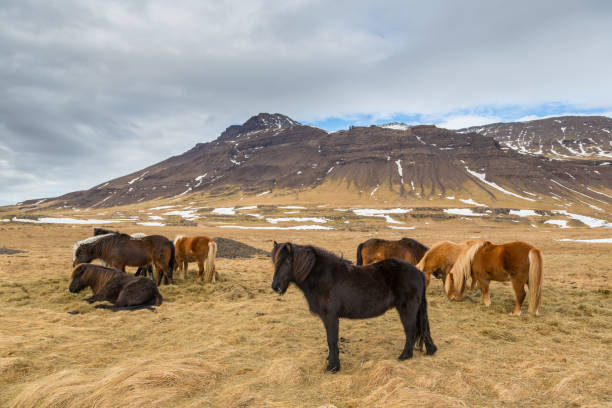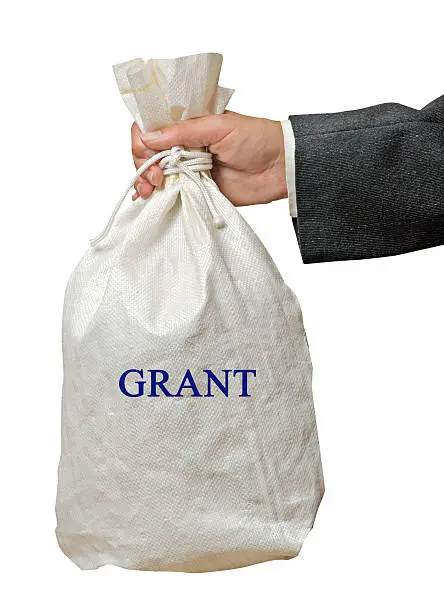Wildlife grants are financial allocations provided by governments, organizations, or foundations to support projects aimed at conserving and protecting wildlife and their habitats.
These grants play a crucial role in addressing the challenges faced by various species and ecosystems.
These funds are often used for initiatives such as habitat restoration, research on endangered species, community education programs, and anti-poaching efforts. By investing in wildlife grants, we not only safeguard the incredible biodiversity on our planet but also contribute to the overall health of ecosystems and the well-being of future generations.
Think of wildlife grants as a lifeline for nature, fostering a harmonious balance between human development and the preservation of our planet’s diverse and awe-inspiring creatures. It’s a financial embrace that echoes a commitment to coexisting with the incredible tapestry of life that surrounds us.
The Vital Role of Wildlife Grants: A Beacon for Biodiversity Conservation
In the intricate dance of ecosystems, wildlife grants emerge as a powerful instrument, channeling financial support towards the protection and preservation of our planet’s diverse flora and fauna. Let’s delve into the depths of their importance, unraveling the tapestry of benefits they weave for our environment.
1. Preserving Biodiversity:
- Wildlife grants serve as the guardians of biodiversity, ensuring that a rich variety of species and ecosystems thrive. By supporting initiatives that focus on endangered species, habitat restoration, and conservation research, these grants become the driving force behind maintaining the delicate balance of life on Earth.
2. Ecosystem Health:
- A thriving ecosystem is a reflection of its inhabitants, and wildlife grants play a pivotal role in maintaining the health of these systems. They enable the restoration of degraded habitats, fostering resilience against environmental threats and ensuring that ecosystems can adapt to changing conditions.
3. Scientific Advancements:
- The financial backing from wildlife grants fuels cutting-edge research. This research not only deepens our understanding of various species but also contributes to innovative conservation strategies. From tracking migration patterns to studying reproductive behaviors, these grants empower scientists to unlock the mysteries of the natural world.
4. Community Engagement and Education:
- Wildlife grants extend beyond the wilderness, reaching communities and instilling a sense of responsibility towards nature. Programs funded by these grants educate people about the importance of conservation, creating a ripple effect where communities become active participants in safeguarding their local environments.
5. Mitigating Climate Change:
- As our planet faces the challenges of climate change, wildlife grants become a crucial tool in the fight against its impacts. By supporting projects that enhance carbon sequestration, promote sustainable practices, and protect vital ecosystems like forests and wetlands, these grants contribute to climate resilience.
6. Economic Benefits:
- The importance of wildlife grants transcends ecological considerations; it also has economic implications. Sustainable tourism, which often results from well-preserved natural areas, can generate revenue for local communities. This economic incentive creates a self-sustaining cycle where conservation efforts are rewarded.
List of Foundations Awarding Wildlife Grants
1. World Wildlife Fund (WWF):
- Pioneers in global conservation, WWF directs grants towards protecting endangered species, preserving habitats, and advocating for sustainable practices. Their initiatives span continents, creating a formidable force for wildlife protection.
2. Wildlife Conservation Society (WCS):
- With a mission to save wildlife and wild places, WCS focuses on field-oriented projects. Their grants support on-the-ground efforts, from anti-poaching initiatives to habitat restoration, ensuring tangible outcomes in key biodiversity hotspots.
3. National Geographic Society – Conservation Trust:
- The iconic yellow border extends beyond magazine covers to fund impactful conservation projects worldwide. Their grants fund exploration, scientific research, and community-based initiatives that contribute to the protection of wildlife and ecosystems.
4. The Conservation Fund:
- Striking a balance between conservation and sustainable development, The Conservation Fund’s grants finance projects that protect natural habitats, support local communities, and promote innovative conservation solutions.
5. The Nature Conservancy:
- Armed with a global reach, The Nature Conservancy channels grants into projects that span land and water conservation, climate change mitigation, and sustainable resource management. Their approach integrates science, collaboration, and strategic investments.
6. Wildlife Trust:
- Operating on a local level, Wildlife Trusts across different regions provide grants for community-driven conservation projects. These grants empower grassroots efforts, fostering a sense of stewardship among local populations.
7. Leonardo DiCaprio Foundation:
- Beyond the glitz of Hollywood, Leonardo DiCaprio’s foundation supports environmental causes, including wildlife conservation. Their grants fuel innovative projects addressing climate change, habitat protection, and the preservation of endangered species.
8. Disney Conservation Fund:
- Melding magic with conservation, Disney’s fund supports projects worldwide, focusing on protecting wildlife and connecting kids with nature. Their grants often have an educational component, fostering a new generation of environmental stewards.
9. Critical Ecosystem Partnership Fund (CEPF):
- Targeting biodiversity hotspots, CEPF’s grants prioritize regions with exceptional concentrations of species. Their strategic approach aims to empower local communities and organizations in preserving the world’s most threatened ecosystems.
10. National Fish and Wildlife Foundation (NFWF):
- Operating at the intersection of public and private collaboration, NFWF awards grants for projects that enhance wildlife habitats, support sustainable fisheries, and promote conservation partnerships across the United States.
11. Rainforest Foundation US:
- Specializing in tropical rainforest conservation, this foundation provides grants to indigenous communities, supporting their efforts to protect their lands and biodiversity. Their focus extends to combating deforestation and promoting sustainable resource management.
12. Jane Goodall Institute:
- Founded by renowned primatologist Jane Goodall, this institute funds projects that prioritize the protection of great apes and their habitats. Grants often emphasize community involvement and education for sustainable coexistence.
13. Pangolin Crisis Fund:
- Recognizing the plight of the world’s most trafficked mammal, this fund directs grants towards pangolin conservation. Projects supported include anti-trafficking efforts, habitat protection, and research on pangolin behavior.
14. Global Environment Facility (GEF):
- Operating at the intersection of environmental protection and sustainable development, GEF provides grants for projects addressing biodiversity conservation, climate change, and land degradation on a global scale.
15. African Wildlife Foundation (AWF):
- With a focus on African biodiversity, AWF channels grants into projects that protect iconic species like elephants and rhinos. Their initiatives often involve community engagement to ensure sustainable cohabitation.
16. BirdLife International:
- As a global partnership for bird conservation, BirdLife International allocates grants to safeguard avian biodiversity. Their projects range from protecting critical bird habitats to promoting sustainable bird-friendly practices.
17. Turtle Conservation Fund:
- Committed to the preservation of turtles and tortoises, this fund supports projects addressing habitat loss, illegal trade, and disease affecting these ancient reptiles. Grants contribute to both in-situ and ex-situ conservation efforts.
18. Ocean Foundation:
- Recognizing the interconnectedness of marine life, the Ocean Foundation funds projects that focus on ocean conservation. Their grants support initiatives ranging from coral reef protection to marine species conservation.
19. WildAid:
- Combating wildlife trafficking on a global scale, WildAid funds projects that address the demand for illegal wildlife products. Their grants support campaigns, enforcement efforts, and community education to reduce the illegal wildlife trade.
20. Conservation International:
- Operating in biodiversity hotspots around the world, Conservation International directs grants towards projects that prioritize the protection of ecosystems, endangered species, and the well-being of local communities.
A Comprehensive Guide on How to Apply for Wildlife Grants
1. Research Granting Organizations:
- Begin by identifying organizations aligned with your conservation goals. Explore the missions, focus areas, and eligibility criteria of various foundations. Understanding their priorities is crucial for crafting a compelling application.
2. Craft a Clear and Concise Proposal:
- Capture the essence of your project in a well-articulated proposal. Clearly outline the problem you aim to address, your project’s objectives, and the anticipated outcomes. Use data and evidence to strengthen your case and demonstrate feasibility.
3. Align with Grant Criteria:
- Tailor your proposal to align seamlessly with the specific criteria outlined by each granting organization. Highlight how your project addresses the foundation’s mission, target regions, and key conservation priorities.
4. Build a Strong Team:
- Showcase the expertise and commitment of your team. Whether it’s scientific researchers, community leaders, or local partners, emphasize how their skills contribute to the success of the project. A well-rounded team enhances credibility.
5. Demonstrate Community Involvement:
- Many granting organizations prioritize projects with strong community engagement. Clearly articulate how your project involves and benefits local communities. Demonstrating a collaborative approach adds depth to your proposal.
6. Budget with Precision:
- Develop a detailed budget that reflects the scope of your project. Clearly outline how grant funds will be utilized, including specific expenses such as equipment, personnel, research, and community outreach. Transparency builds trust with funders.
7. Highlight Innovation:
- Showcase any innovative approaches or technologies embedded in your project. Granting organizations often seek projects that bring fresh perspectives or employ cutting-edge methods to address conservation challenges.
8. Emphasize Sustainability:
- Address the long-term sustainability of your project. Discuss plans for post-grant sustainability, ensuring that your conservation efforts will endure beyond the funding period. This can be a key factor for funders looking for lasting impact.
9. Provide a Compelling Narrative:
- Weave a captivating story around your project. Help reviewers connect emotionally with your cause by highlighting the urgency, uniqueness, and significance of your conservation efforts. A compelling narrative can set your proposal apart.
10. Adhere to Application Guidelines:
- Carefully review and adhere to the application guidelines provided by each granting organization. Ensure that you submit all required documents, meet deadlines, and follow any specific formatting or submission instructions.
The Impact of Wildlife Grants on Our Planet
Wildlife grants, like drops in a vast ecological pond, create ripples that extend far beyond the immediate projects they fund. Delving into the profound impact of these grants reveals a tapestry of positive change that reverberates through ecosystems, communities, and the very fabric of our shared natural heritage.
1. Species Conservation and Recovery:
- At the heart of wildlife grants lies the commitment to saving endangered species. These funds support projects that provide a lifeline for species on the brink, contributing to population recovery and genetic diversity. The impact is tangible, as success stories emerge from once precarious situations.
2. Habitat Restoration and Preservation:
- The grants’ influence extends to restoring degraded habitats and preserving pristine wilderness. From reforestation projects to wetland conservation initiatives, these efforts not only safeguard biodiversity but also enhance the resilience of entire ecosystems.
3. Community Empowerment and Stewardship:
- Wildlife grants often foster a sense of community ownership and stewardship. By engaging local populations in conservation efforts, these funds empower communities to become guardians of their natural surroundings, ensuring sustainability beyond the lifespan of the grants.
4. Scientific Advancements and Knowledge Sharing:
- The impact of grants reverberates in the scientific community. Funding facilitates groundbreaking research, leading to a deeper understanding of wildlife behavior, ecosystems, and the impacts of climate change. This knowledge is shared globally, contributing to a collective effort for informed conservation.
5. Climate Resilience and Carbon Sequestration:
- Conservation projects funded by these grants play a crucial role in mitigating climate change. Preserving forests and other carbon-rich ecosystems aids in carbon sequestration, contributing to the global fight against rising carbon levels and their detrimental effects on the climate.
6. Economic Benefits and Sustainable Tourism:
- The positive impact extends to local economies. Well-preserved natural areas, supported by wildlife grants, often become hubs for sustainable tourism. This not only generates revenue for local communities but also underscores the economic value of intact ecosystems.
7. Education and Awareness Campaigns:
- Wildlife grants are catalysts for education and awareness. Through community outreach, school programs, and public campaigns, these funds contribute to a growing global awareness of the importance of biodiversity conservation and the interconnectedness of all living things.
8. Mitigation of Human-Wildlife Conflict:
- Conservation initiatives supported by grants often address human-wildlife conflict, finding sustainable solutions that allow both wildlife and local communities to coexist harmoniously. This mitigation fosters a balance that benefits ecosystems and livelihoods.
9. Inspirational Models for Global Conservation:
- Successful projects funded by wildlife grants become beacons of inspiration. They serve as models for effective conservation strategies, influencing policies and encouraging collaboration on a global scale. The impact of these grants extends beyond specific projects, shaping the future of conservation efforts worldwide.
10. Preservation of Earth’s Natural Heritage:
- Ultimately, the collective impact of wildlife grants transcends individual projects. It is a testament to our commitment to preserving Earth’s natural heritage—a shared responsibility that echoes through time, ensuring that future generations inherit a planet teeming with life and ecological wonders.
Tips for Writing a Successful Grant Proposal for Wildlife Grants
1. Know Your Audience:
- Begin by understanding the values and priorities of the granting organization. Tailor your proposal to resonate with their mission, focus areas, and expectations. Show that you share a common vision for conservation.
2. Craft a Compelling Narrative:
- Your proposal is a story—a narrative that must engage and inspire. Paint a vivid picture of the challenges your project addresses, the solutions it proposes, and the positive impact it can achieve. Make the reader feel the urgency and significance of your conservation endeavor.
3. Clearly Define the Problem:
- Start with a crystal-clear definition of the problem your project aims to solve. Use data, case studies, and real-world examples to illustrate the severity of the issue. A well-defined problem sets the stage for a compelling solution.
4. Outline Measurable Objectives:
- Clearly articulate the objectives of your project and make them measurable. Define specific, achievable goals that can be quantified. This not only provides a roadmap for implementation but also allows funders to gauge the success of your efforts.
5. Demonstrate Feasibility:
- Convincingly show that your project is feasible and well-planned. Provide a detailed project timeline, outline the methodology, and explain how your team’s expertise aligns with the project’s requirements. Demonstrating feasibility instills confidence in funders.
6. Emphasize Collaboration:
- Highlight partnerships and collaborations that strengthen your project. Showcase the involvement of local communities, academic institutions, or other relevant stakeholders. Collaboration adds depth to your proposal and enhances the potential for long-term impact.
7. Link to Conservation Priorities:
- Explicitly connect your project to broader conservation priorities. Demonstrate how it aligns with global or regional conservation strategies and contributes to the protection of biodiversity hotspots. This contextualization strengthens the significance of your proposal.
8. Incorporate Innovative Approaches:
- Stand out by incorporating innovative elements into your proposal. Whether it’s the use of cutting-edge technology, novel research methodologies, or creative community engagement strategies, showcase how your project brings a fresh perspective to conservation.
9. Address Potential Challenges:
- Anticipate and address potential challenges head-on. Whether it’s logistical issues, unforeseen obstacles, or ethical considerations, demonstrating that you’ve thought through potential challenges and have mitigation strategies in place adds a layer of realism to your proposal.
10. Humanize Your Project:
- Inject humanity into your proposal by emphasizing the real-world impact on local communities, ecosystems, and endangered species. Share stories, testimonials, or examples that showcase the tangible, positive changes your project aims to achieve.
11. Budget with Transparency:
- Develop a transparent and detailed budget that aligns with the scope of your project. Clearly outline how grant funds will be allocated, and ensure that the budget reflects the true cost of implementing your conservation initiative. Transparency builds trust with funders.
12. Follow Guidelines and Proofread:
- Adhere to the specific guidelines provided by the granting organization. Ensure that your proposal is formatted correctly, all required documents are included, and deadlines are met. Proofread meticulously to present a polished, professional submission.
Conclusion:
In the symphony of conservation, wildlife grants emerge as the crescendo—a powerful harmonization of resources, passion, and commitment to safeguard our planet’s biodiversity. From the towering canopies of rainforests to the depths of ocean abysses, these grants resonate, weaving a tapestry of positive change that extends far beyond financial transactions.
As we navigate the challenges of a rapidly changing world, wildlife grants stand as beacons of hope and catalysts for transformation. They empower scientists to unravel the secrets of our natural world, communities to become stewards of their local environments, and endangered species to reclaim their place in the intricate web of life.
The impact of wildlife grants is not confined to individual projects; it ripples through ecosystems, economies, and educational landscapes. These grants foster collaborations that transcend borders, setting the stage for a collective effort to address global conservation challenges.
In this journey of preservation, each grant awarded is a promise—a pledge to future generations that we recognize the value of Earth’s incredible biodiversity. It’s a commitment to coexist harmoniously with the myriad creatures that share our planet, ensuring that the symphony of life continues to enchant and inspire.
As we celebrate the victories and learn from the challenges, let us renew our commitment to championing the cause of wildlife grants. Together, we can create a legacy of conservation that echoes through time—a legacy that speaks of resilience, unity, and a profound respect for the delicate dance of life on our extraordinary planet. The story of wildlife grants is ongoing, and with every grant awarded, we contribute a chapter to a narrative of hope, stewardship, and the enduring beauty of the natural world.
Recommended Books for Enhancing Grant Writing Skills
Here are a few recommended books:
- The Ultimate Guide to Federal Grant Applications: Techniques for Success – This book is a must-read for anyone looking to navigate the complex world of federal grant applications. It offers practical techniques, insider tips, and a comprehensive understanding of what it takes to create successful federal grant applications.
- Advanced Grant Writing for Nonprofits : Focuses on sophisticated techniques for experienced grant writers. It delves into complex aspects of proposal development, offering strategies for dealing with competitive grant environments and large funding bodies.
- Mastering Grant Writing: A Nonprofit’s Guide to Effective Proposal Development and Submission: This book serves as a comprehensive guide, covering the entire process of grant writing. It includes tips on understanding funders’ perspectives, crafting compelling narratives, and the nuances of proposal submission.
- Becoming the Grant Guru: Freelancer’s Guide to Success : Tailored for freelance grant writers, this book provides insights into building a successful career in grant writing. It includes strategies for finding clients, managing projects, and maximizing the impact of grant proposals.
- The Small Business’s Guide to Winning Grants : This resource is particularly useful for small businesses looking to secure grants. It offers practical advice on identifying suitable grant opportunities, understanding the requirements of small business grants, and crafting winning proposals.
- Grant Readiness Guide: Preparing to Triumph in Funding Opportunities : A comprehensive resource for organizations at various stages of grant preparedness. It provides a roadmap for developing organizational capacity, aligning projects with funders’ goals, and creating compelling applications.
- Her Capital: Unlocking Women’s Small Business Grants: Specifically designed for women entrepreneurs, this book offers guidance on navigating the landscape of small business grants for women. It includes insights into grant sources, application strategies, and tips for leveraging grants to grow a business.
Unlock Your Grant Success!






